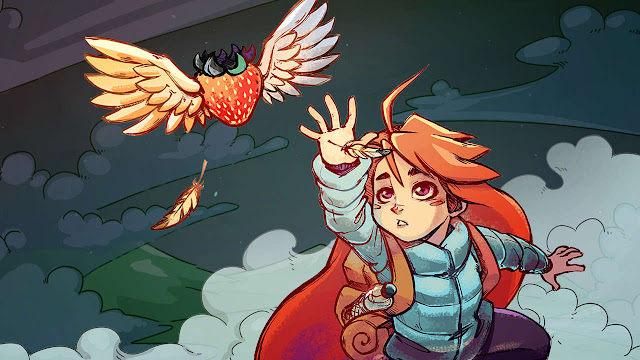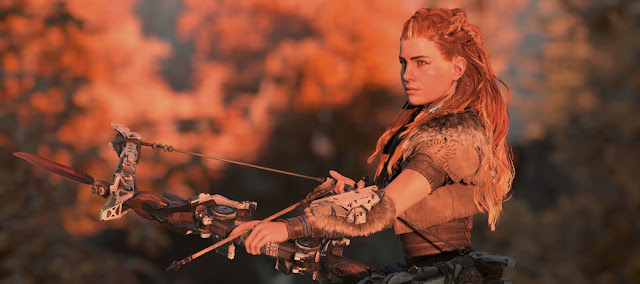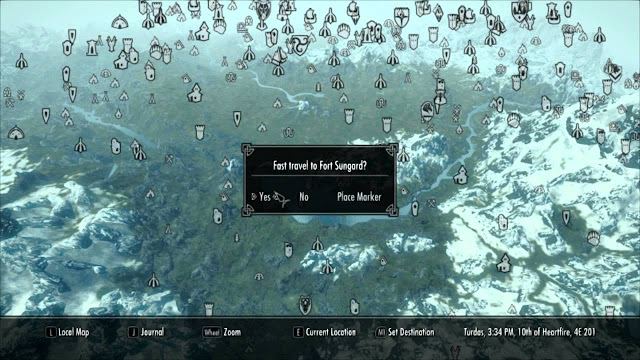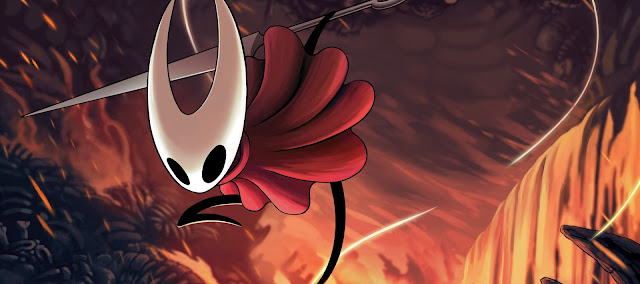Celeste (Review)
Celeste might just be the best game I have or will ever play. This retro-styled platformer from indie developer Matt Makes Games is an incredible experience from start to finish. It takes you on a captivating journey with its energetic and distant soundtrack, cute 16-bit art style, and deep and heart touching narrative, perfectly complemented by one of the most addicting and enjoyable gameplay loops ever: jumping, dashing, and dying.
When I first booted up Celeste, it was not the charming aesthetic but the beautiful soundtrack that caught my attention. Celeste’s soundtrack and music are not one to subtly linger in the background of the screen and player’s mind, but one that blasts its way into our every action: it almost feels as if Celeste turns into a rhythm game in those intense moments of pure concentration and platforming flair. The soundtrack flows along with Madeline’s every move and action. Each different element in a level makes a distant sound: the whoosh of a feather in Chapter 6, or the click of a traffic light block in Chapter 1. This incredible amount of detail and effort provides a new layer to the platforming and gameplay, where the player receives a unique audio cue and effect for every move and action that is performed. The sound design of Celeste is excellent, and the soundtrack pumps and beats its way up into the hearts and minds of every single player. If you don’t believe me, give it a listen yourself.
Spotify: https://open.spotify.com/album/1ZfETfec0U02KrKNI8w3Gf?si=vDioYu1BSNGsBcFPlPhTgg
Youtube: https://youtube.com/playlist?list=PLe1jcCJWvkWiWLp9h3ge0e5v7n6kxEfOG
Celeste’s art style is by no means below-par, and while I do think the soundtrack outshines its visual counterpart, the art design and animation in Celeste is top-notch. From the overall pixel art style that the game uses to the detail of small animations on Madeline’s character, Celeste never feels like appropriate attention was not given to the art design. Visual effects add a lot of flair to the presentation, especially in Celeste’s Chapter 4: Golden Ridge. Without going into spoiler territory, Chapter 4 takes place on a mountain ridge, with a more open setting than the city and resort from earlier chapters. Since it is an exposed area, there is a lot of harsh gusting wind. This wind also has an impact on gameplay as it pushes Madeline around and adds a new angle to the platforming, but the subtle art design choice of boldly animating the movement of wind in its various directions on the screen does a lot to immerse the player in the game and its setting.
While the visual effects on the wind is a great example of the outstanding art design of Celeste, the animations on Madeline’s character are the real standouts. When Madeline dashes, her hair changes colour from red to blue. This indicates that the player is out of dashes and can’t do any more until they land on the ground or interact with level-specific objects that refill their dash, which promptly changes the hair colour back to red. Even though this is a minor gimmick and doesn’t really make the game easier to play, it goes far to show the effort, love and care put in by the developers to craft this experience. In addition to the hair colour change to indicate the number of dashes the player has left, another visual cue is used to portray whether Madeline still has stamina left or not. Celeste’s wall climbing mechanic uses a stamina system similar to Breath of the Wild, in the fact that you can climb until your stamina runs out. As Madeline begins to climb, white comic like sweat beads are emitted from her head. This shows that Madeline is climbing and her stamina is being used. As the stamina meter finishes, the white exhaustion markers from Madeline’s head get bigger and her body begins to flash red, to indicate that you cannot climb anymore and that Madeline is now going to fall. What might be thought of as a useless inclusion, actually plays a huge part in gameplay since there is no way for the player to keep track of how much stamina they currently have left, and when it is going to get over. Whether it’s the more noticeable visual effects, or the detailed animation on Madeline’s character, or just the charming pixel-art and vibrant use of colour, Celeste’s art style is constantly evolving, level to level, chapter to chapter, and never ceases to amaze with its splendour and beauty.
Celeste tells a tale, intertwined with deep meaning about serious issues like the stress of modern-day life, depression, and anxiety. Madeline, the game’s protagonist, suffers from these issues and is trying to climb the Celeste mountain as a way of proving herself to the world and ironically, to herself. As the player makes the treacherous journey up the slopes of Celeste mountain, they explore Madeline’s emotions and thoughts and witness Madeline come to grips with her anxiety and Badeline: Madeline’s dark side as to say. Madeline’s journey is an intriguing one and one that embeds itself in the gameplay, the dangerous mountain and perilous platforming a metaphor for the struggles of life, the friends Madeline meets on her way up, a metaphor for loved ones and family that help you through lives highs and lows. The player is constantly motivated to overcome the giant obstacle that is Celeste mountain and help Madeline in her journey to conquer her own metaphorical mountain of self-doubt.
Celeste’s gameplay design is based on 4 main mechanics: jumping, dashing, wall-climbing, and dying, the last one coming naturally to most players, so I won’t go over it too much. Gameplay is a real focus in Celeste. Each chapter has new elements and mechanics that make it unique from the previous one. It might have a traffic light that carries you forward using your momentum, or a wind that pushes you back and flings you forward, doubling the distance of a single dash, or a red circular blob, that lets your zoom across the screen. Each and every chapter in Celeste provides something different, something unique, and something interesting to keep the player hooked across the 10 or so hours that it would take one to finish the main story.
The dash mechanic is probably the best feature of this game. Madeline is equipped with an 8-directional dash that allows her to cover distances that can’t be passed in a single jump. This single mechanic alone makes the platforming in the game so fun and addicting. The dash is snappy, responsive, and its movement can be completely cut out mid-dash by moving the left stick. This adds a ton of flexibility to the movement since the player can make changes up to the last second. The wall-climb is less revolutionary but adds much-needed verticality to Madeline’s move set since the jump isn’t very high. Celeste mixes up simple ingredients to create a whirlwind of a cocktail, reminiscent of a playground of platforming joy but also death. Death will come a lot but Celeste’s great checkpointing design and reload screens mean you spawn back at the start of the screen in just about a second after you die. Jumping, dashing, wall climbing, and dying, a simple formula for a perfect equation.
Celeste’s overall game design is broken down into chapters. There is a total of 7 in the main game, along with a bonus chapter, and 1 as free-DLC. These chapters can be accessed from the map allowing for the player to return to previous chapters at any point in the story. The game also has strawberries, which is a sort of collectible that you earn by completing these side platforming challenges in every chapter. There is a total of 175 in the main story, but I only collected 48 by the end of my first playthrough. These side platforming challenges are by no means inferior to the platforming sections found along the beaten path but provide a variety of challenges for the player to overcome that hold their ground against even some of the game’s best story sections. A minor frustration I faced is that some chapters have boss encounters at the end where you are put in a chase like situation and have to complete levels as you are being chased by a boss that you were clearly not ready for. When I first encountered such a situation at the end of the 2nd chapter, I was frustrated because it had broken up the platforming that was not time-bound and I could tackle at my own slow pace. But as I played on, and encountered more of these, I found myself enjoying them and feeling that they provided a nice but not too major change-up from the game usual platforming system.
There is a lot to do once Celeste’s main story is complete. Each chapter has a B-Side, which is an alternate and harder version of each chapter, activated by finding a cassette tape hidden in its respective chapter. These B-Sides, while really hard, provide some unique and memorable challenges that don’t feel spiked against the player since one would have improved vastly since starting their playthrough. There are also C-Sides, as well as a bonus level unlocked by beating 4 B-Sides or by finding Crystal Hearts that are hidden behind platforming puzzles that require the use of brains over platforming skill.
Celeste is everything I wanted from a modern-2d platformer and more. It comes outfitted with breath-taking art design and animations, accompanied by a mesmerizing and unforgettable soundtrack, which I listened to on repeat for weeks after completing the game. Celeste weaves a heart-warming story with tons of emotions, that will leave lasting memories on the players that see it through. Jumping and dying has never been more fun, and Celeste’s platforming can only be described as pixel perfect. I fell in love with Celeste, and I doubt that the love is going away any time soon.
Name: Celeste
Developer: Matt Makes Games
Initial Release Date: 25th January 2018
Platforms: Nintendo Switch, PS4 (Reviewed), Xbox One, PC
Score: 5/5












Very nicely written👌 will definitely try to play this game
ReplyDelete